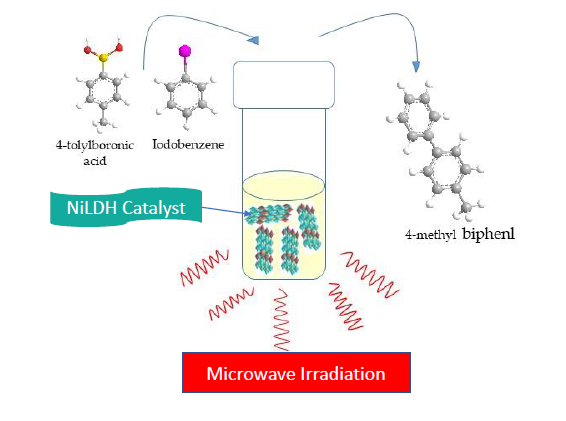Suzuki cross-coupling reaction has developed one of the furthermost effectual approaches for the synthesis of biaryls or substituted aromatic moieties from aryl halides and arylboronic acids with a palladium-catalyst in the past two era’s. Herein, Pd-free layered double hydroxide containing nickel catalysts were prepared by co-precipitation method under ultrasonic irradiation and N2 atmosphere with different molar ratios of Ni: Mg: Al and coded as (1NiLDHs-Dr), (1.5NiLDHs-Dr) and (2NiLDHs-Dr). A series of reduced catalysts under 5%H2/N2 at different temperatures were coded as 1NiLDHs-R200, 1.5NiLDHs-R200 and 2NiLDHs-R200. As-synthesized 2NiLDHs-Dr was the superlative catalyst when coupling different aryl halides with different boronic acids derivatives. Deep investigation of all catalysts was done using different techniques such as inductively coupled plasma optical emission spectroscopy (ICP-OES), x-ray photoelectron spectroscopy (XPS), powder x-ray diffraction (XRD), thermogravimetric analyses (TGA), Fourier transfer infrared (FTIR), scanning electron microscope (SEM) connected with energy dispersive x-ray (EDX) and N2-physisorption at -196 ℃. The results attained verified that ɑ-Ni(OH)2 was fashioned for 2NiLDHs-Dr catalyst and the enclosure of nickel ions in the cationic sheet of layered structure were responsible for the fascinating catalytic efficacy rather than the basic nature of material. The Ni-containing LDHs catalysts encourage forthcoming studies in Pd-free catalyzed C-C coupling reactions.

